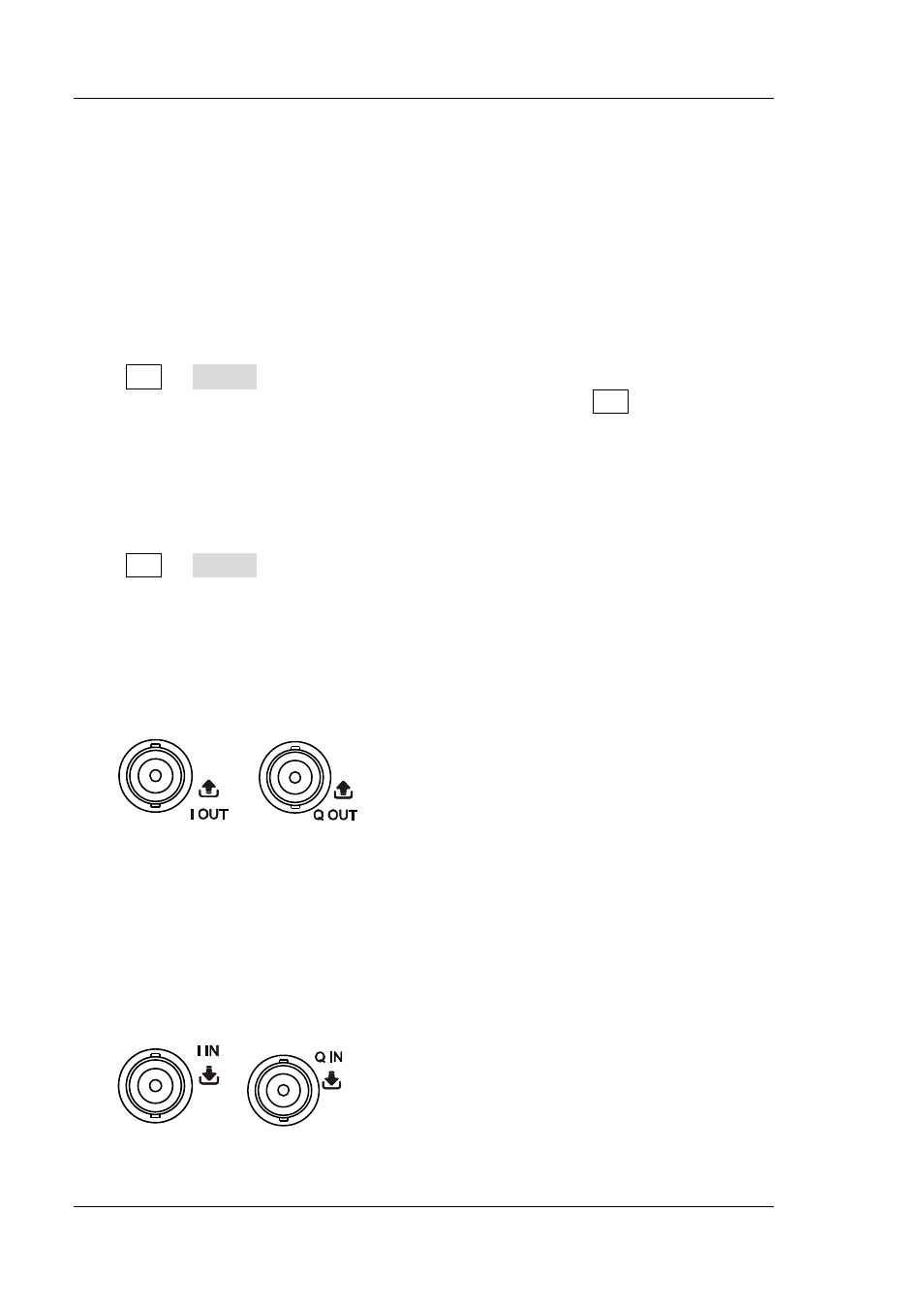I/q modulation (option iq-dsg3000), To enable i/q modulation, To select the modulation source – RIGOL DSG3000 Series User Manual
Page 74: I/q modulation (option iq-dsg3000) -34

RIGOL
Chapter 2 Front Panel Operations
2-34
DSG3000 User’s Guide
I/Q Modulation (Option IQ-DSG3000)
I/Q modulation can improve the spectrum utilization. In IQ modulation, two
orthogonal carrier signals (with the same frequency and 90°phase difference,
generally expressed with Sin and Cos) are modulated with the I (In-Phase
component) and Q (Quadrature Phase component) signals respectively and then
they are transmitted together.
To Enable I/Q Modulation
Press I/Q Switch to select “On” or “Off”.
On: enable the I/Q modulation function. The backlight of I/Q goes on and the
I/Q label is displayed in the function status area in the user interface.
Off: disable the I/Q modulation function and this is the default state.
To Select the Modulation Source
Press I/Q Source to select “Int” or “Ext” modulation source.
1. Internal Source
When “Int” is selected, the built-in baseband generator provides the modulating
signal. At this point, if the baseband output switch is turned on, the RF signal
generator will output the I (In-Phase) components and Q (Quadrature Phase)
components of the I/Q modulation from the [I OUT] and [Q OUT] connectors
(as shown in the figure below) on the rear panel.
2. External Source
When “Ext” is selected, the RF signal generator receives the in-phase baseband
signal and quadrature phase modulating signal of the I/Q modulation input from
the [I IN] and [Q IN] connectors (as shown in the figure below) on the rear
panel. When the baseband output switch is turned on, the instrument can
output the I (In-Phase) components and Q (Quadrature Phase) components of
the I/Q modulation from the [I OUT] and [Q OUT] connectors on the rear
panel.
